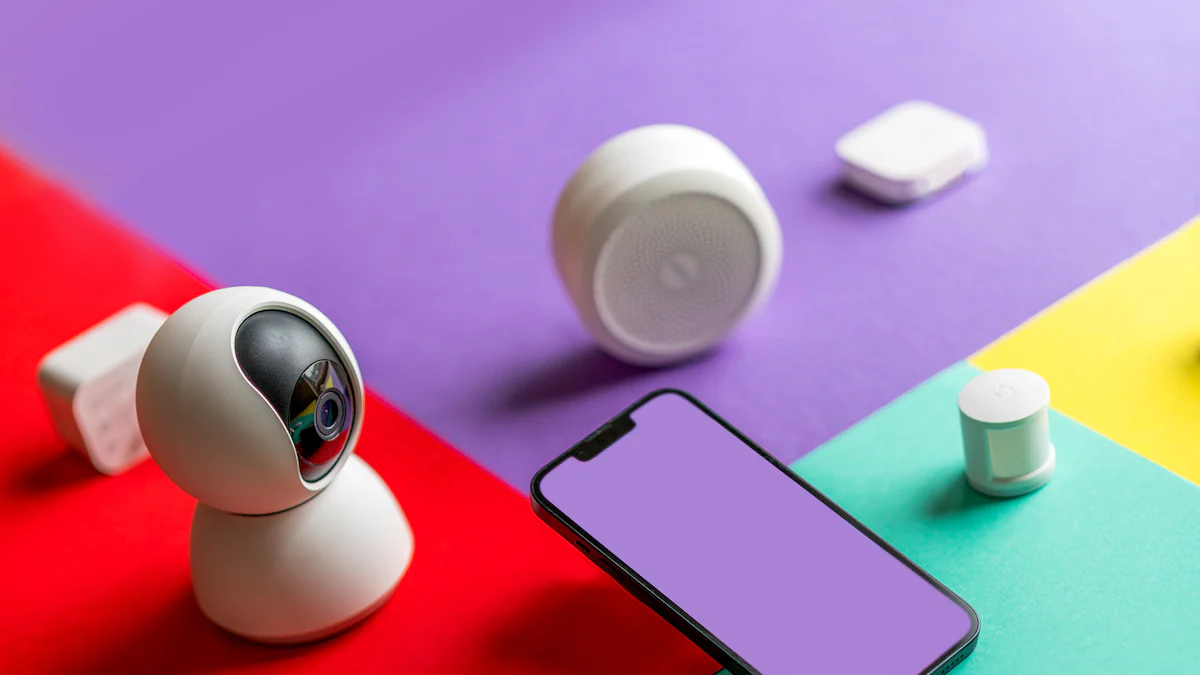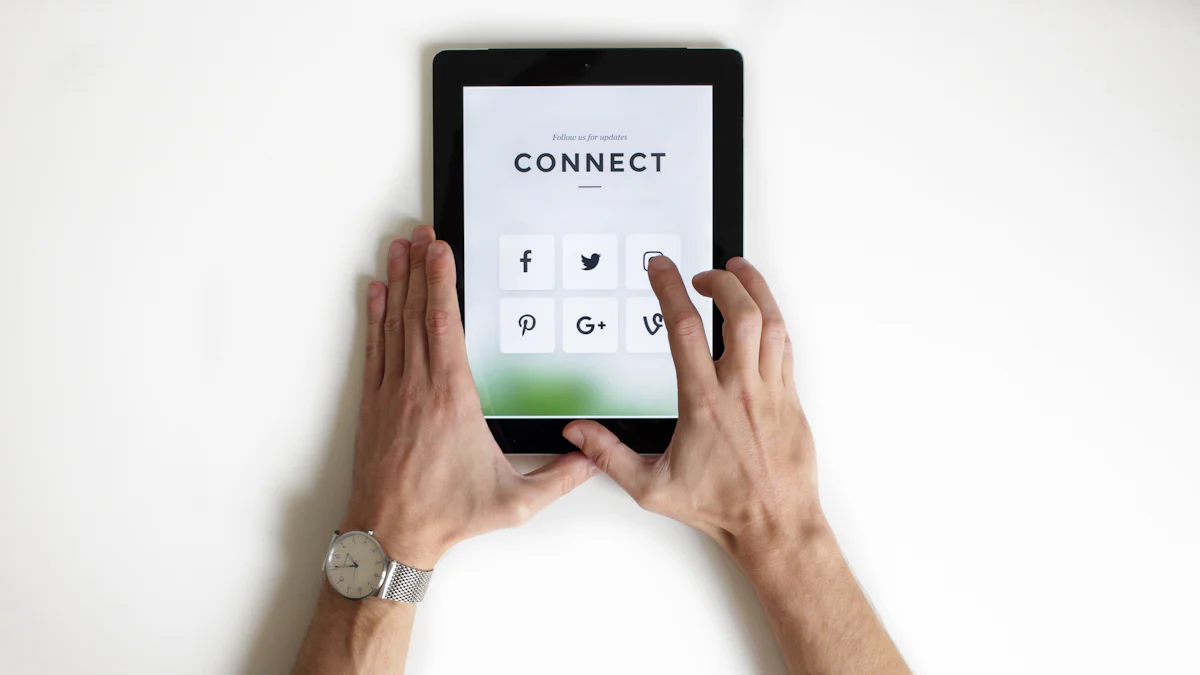

Connected Products use the Internet to share information. These products include devices that connect to networks for remote control and monitoring. The relevance of Connected Products grows in today's world. Many industries find new ways to improve efficiency and customer experience. Connected Products transform how businesses operate and compete. Companies use data from these products to make better decisions. The potential for innovation and growth remains vast.
Understanding Connected Products
Definition and Characteristics of Connected Products
What makes a product 'connected'?
Connected Products link to the Internet or other networks. These products share information about themselves and their surroundings. Sensors, software, and connectivity form the core of these products. The ability to communicate data defines a connected product. This communication allows remote control and monitoring. Connected Products enable new functionalities and services.
Key features of connected products
Connected Products possess several key features. Real-time data exchange stands as a primary characteristic. This feature allows immediate feedback and adjustments. Automation enhances the efficiency of these products. Connected Products often integrate with other devices. This integration creates a seamless user experience. Personalization tailors the product to individual needs.
Examples of Connected Products
Consumer electronics
Consumer electronics represent a significant category of Connected Products. Smartphones connect users to a vast array of services. Smart TVs offer streaming and interactive features. Wearable devices monitor health and fitness. These products enhance daily life through connectivity.
Industrial applications
Connected Products play a vital role in industrial applications. Smart sensors optimize manufacturing processes. These sensors provide real-time data for decision-making. Connected machinery enables predictive maintenance. This capability reduces downtime and increases productivity. Industrial Connected Products transform traditional operations.
Benefits of Connected Products

Enhanced User Experience of Connected Products
Personalization and customization
Connected Products offer personalization options. Users can tailor settings to fit individual preferences. Smart devices learn user habits. Devices adjust functions based on collected data. Personalized experiences increase satisfaction. Users enjoy customized recommendations. Products adapt to changing needs.
Seamless integration with other devices
Connected Products integrate smoothly with other technologies. Users experience seamless transitions between devices. Smart homes connect appliances and electronics. Integration improves convenience and functionality. Users control multiple devices from a single platform. Interconnected systems enhance daily routines.
Operational Efficiency of Connected Products
Real-time data collection and analysis
Connected Products collect data continuously. Sensors gather information from the environment. Real-time data helps users make informed decisions. Businesses use data for operational improvements. Data analysis identifies patterns and trends. Users benefit from timely insights.
Automation and remote management
Connected Products enable automation features. Users set devices to perform tasks automatically. Automation reduces manual intervention. Remote management offers control from anywhere. Users monitor and adjust settings remotely. Efficiency increases with automated processes.
Applications of Connected Products

Healthcare Industry of Connected Products
Connected Products revolutionize healthcare by enhancing patient care and monitoring. The healthcare industry benefits from these innovations in various ways.
Remote patient monitoring
Remote patient monitoring uses Connected Products to track health data. Devices collect information like heart rate and blood pressure. Medical professionals access this data in real-time. This approach improves patient care and reduces hospital visits. Patients receive timely interventions based on collected data. Healthcare providers make informed decisions with accurate information.
Smart medical devices
Smart medical devices represent a significant advancement in healthcare. These Connected Products offer features like automated medication reminders. Devices monitor vital signs and alert users to irregularities. Patients manage chronic conditions more effectively with smart devices. Healthcare providers use data from these devices for better treatment plans. Smart medical devices enhance patient safety and outcomes.
Smart Homes and Cities of Connected Products
Connected Products play a crucial role in developing smart homes and cities. These innovations improve comfort, efficiency, and sustainability.
Home automation systems
Home automation systems use Connected Products to control household functions. Users manage lighting, heating, and security remotely. Automation enhances convenience and energy efficiency. Homeowners receive alerts about unusual activities. Systems learn user preferences and adjust settings automatically. Home automation systems create a comfortable living environment.
Urban infrastructure management
Urban infrastructure management benefits from Connected Products. Cities use sensors to monitor traffic flow and reduce congestion. Connected Products optimize energy consumption in public buildings. Authorities manage waste collection more efficiently with smart systems. Real-time data helps improve public transportation services. Urban planners use insights from Connected Products for sustainable development.
Challenges and Considerations of Connected Products
Security and Privacy Concerns of Connected Products
Security and privacy concerns present significant challenges for Connected Products. Data protection measures play a crucial role in safeguarding user information. Companies must implement robust encryption techniques to protect data. Firewalls and secure access controls help prevent unauthorized access. Regular security audits identify vulnerabilities in Connected Products.
User consent and transparency remain vital for maintaining trust. Users should receive clear information about data collection practices. Companies need to obtain explicit consent before gathering personal data. Privacy policies must outline how data will be used and stored. Transparent communication fosters a sense of security among users.
Technological and Infrastructure Requirements of Connected Products
Technological and infrastructure requirements impact the effectiveness of Connected Products. Network connectivity serves as a fundamental component. Reliable internet connections ensure seamless data transmission. Wireless technologies like Wi-Fi and Bluetooth facilitate communication. Strong network infrastructure supports the functionality of Connected Products.
Compatibility and standardization influence the integration of Connected Products. Devices must adhere to industry standards for interoperability. Standardized protocols enable different products to work together. Compatibility ensures that users can connect various devices without issues. Manufacturers should prioritize adherence to established standards for Connected Products.
Connected products hold immense significance in today's technological landscape. These products revolutionize industries by enhancing efficiency and user experiences. Industries like healthcare and smart homes benefit greatly from connected products. The potential for innovation and growth remains vast. You should explore the possibilities that connected products offer. Adoption of these technologies can lead to transformative changes. Embrace the future with connected products to stay ahead in a competitive world.
FAQ
A connected product links to the Internet or other networks. Sensors, software, and connectivity enable data sharing. This capability allows remote control and monitoring.
Connected products enhance user experiences. These products improve operational efficiency. Businesses use data from these products for better decision-making.
Connected products offer personalization and customization. Users enjoy seamless integration with other devices. Automation features reduce manual tasks.
Healthcare uses connected products for patient monitoring. Smart homes and cities rely on these products for automation. Industrial applications benefit from real-time data collection.
Security and privacy concerns require attention. Companies must implement data protection measures. Technological requirements include network connectivity and compatibility.
Sensors gather information continuously. Real-time data helps users make informed decisions. Businesses analyze data for operational improvements.
Home automation systems use connected products. Users manage lighting, heating, and security remotely. Systems learn preferences and adjust settings automatically.
Remote patient monitoring tracks health data. Smart medical devices offer automated reminders. Healthcare providers use data for better treatment plans.
Continue Reading About Connected Products
2025's Best Data Validation Tools: Top 7 Picks
Explore the top 7 data validation tools of 2025, featuring key features, benefits, user experiences, and pricing to ensure accurate and reliable data.
Howard
Aug 09, 2024
Data Validation Techniques: Secrets to Achieving Precision and Accuracy
Master data validation techniques from manual to machine learning methods. Ensure data quality with our practical steps.
Howard
Aug 06, 2024
Explore the Best Data Visualization Projects of 2025
Discover 2025's top data visualization projects that transform data into insights, enhancing decision-making across industries with innovative tools.
Lewis
Nov 25, 2024
Which Data Analysis Projects Work Best for Beginners?
Ready to shine in 2025? Discover easy data analysis projects to boost your portfolio, learn data cleaning, visualization, and tackle real-world challenges!
Lewis
Mar 10, 2025
How to Start Your Career in Clinical Data Management Jobs
Start Your Career in Clinical Data Management Jobs! Learn Key Skills, Education, and Strategies to Grow in This Thriving Field.
Howard
Oct 30, 2024
How to Access the Chrysler Employee Portal and Dashboard Anywhere
Access the Chrysler employee portal with ease using Dashboard Anywhere. Follow simple steps to log in with your Employee ID and password for seamless access.
Lewis
Nov 05, 2024


